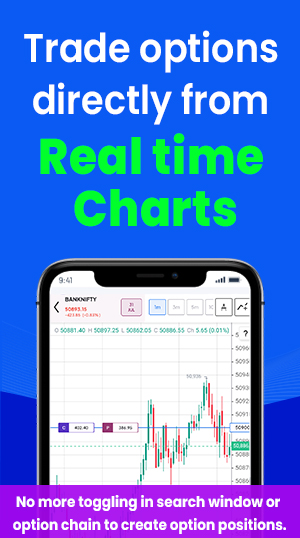The stock market is one of the most promising fields where you can invest according to your flexibility and get good returns. And sometimes it can give unexpected returns that you cannot get investing in other assets like real estate or immovable properties, gold or silver.
Even, it can give you better returns compared to other financial instruments like FDs, bonds, SIPs and recurring deposit schemes. However, the returns from the stock market are highly dependent on the movement of the market, or you can say, as per the main indices like Nifty or Sensex.
Also Read: What are the Top Factors Affecting the Stock Market in India
In some situations, you will not get the desired returns, or you can incur losses, but if you invest for the long term, you will definitely get the good returns. But the question right here is how to start investing in the stock market. Don’t worry, you have landed at the right place. We will tell you the simple way you can start investing in the share market with step-by-step guidance for beginners.
How to Invest in the Stock Market in India?
Before you start investing in the stock market, you need to consider a few things, like defining your investment goals, time horizon and risk appetite. And based on these factors, you can decide whether the stock market is the right field for you for investment or not.
Investment Objectives: Means, why you want to invest your money, to earn money, to accumulate your wealth or utilise the unused funds lying in your bank account. Or you are investing to get good returns and use the funds for your business purposes or want to use after the retirement.
Time Horizon: If you are expecting good returns from the stock market, what is your time horizon, means how long you can hold your investments like, few months, a year, 3 years, 5 years and 10 years or more? Because investing means it is not guaranteed to get good returns in the short term.
Also Read: Things to Consider Before Buying Stocks for Long Term: 10 points
Risk Tolerance: Last but not least, you must have heard this disclaimer in stock market Ads, “Investing in the stock market is subject to market risks, and you should read all the related documents carefully before investing”. Hence, evaluate your risk appetite, how much risk you can take or how much loss you can afford, when investing in the stock, so that it will not affect your financial stability.
Guide to Invest in the Share Market
How to select the right stock for investing, where or which sector to invest and how to analyse various factors while investing comes after once you enter into the market. Before that, you need aright online platform to start your investment journey in the stock market. We have listed here the stepwise guidance on how to start investing in the stock market, with useful and reliable links to start.
Steps to Start Investing in the Stock Market:
Step 1: Choose the Right Broker
First of all, you have to choose the right discount broker or full-service broker to open essential accounts for investing or trading. You can find the best discount broker or full service broker by checking or comparing the brokerage charges, demat account charges and online trading platform fees, etc.
Also Read: Questions You Need to Ask Before Choosing a Discount Broker in India
Moneysukh is one of the best discount brokers in India, also providing the full broker service with an online trading platform to trade or invest in various market segments. With Moneysukh, you can trade in equities, commodities and the currency market at the lowest brokerage charges. However, nowadays, all brokers provide online trading apps to invest in the stock market through your smartphone.
Step 2: Opena Demat & Trading Account
Once choose your broker, you have to open demat and trading account with them with reference to your UID or Aadhar Card and PAN details. A trading account is opened with your broker, while the demat account is opened through your broker with any of the two depositories, NSDL and CDSL (government bodies).
Also Read: What are the Benefits of Demat Account: Advantages & Why you need it
A demat account is an electronic account where you hold your shares bought from the primary or secondary market in dematerialised or electronic form. A trading account is the account used to trade or buy and sell shares on the market. You can also use this account to trade mutual funds and other securities.
Step 3: Log in to your Trading Account
When you open a trading and demat account, your broker will provide you an online trading platform through a web page or through a mobile application to do all your transactions. You can download the app and register with your registered mobile number or email ID. Maybe you might be asked to upload your Aadhar and PAN details with a latest photograph or selfie to complete your KYC.
Also Read: How to Choose the Best Trading Platform in India: Points to Check
Once you have completed your KYC, you can use your trading and demat account for buying and selling shares. However, in some cases it takes some time, maybe up to 24 to hours to verify your KYC details to start a transaction, but if all your documents are valid, you can start the transactions before verification.
Step 4: Link Bank Account and Add Funds
To invest in the share market, you need funds that you can transfer after logging into your trading account. You can connect your UPI-linked bank account, or you can also use the net banking to transfer the funds from your bank account to your trading account or vice versa. In fact, there is a wallet in your trading account where all your funds are located that you can use to buy shares and other investable securities.
You can add funds as per your wish or as per the funds required to purchase shares of a particular company at a specific price. You cannot calculate exactly till the transaction, as during the market hours, the share price keeps fluctuating, and there will also be some brokerage charges applicable on each transaction. Hence, transfer an estimated higher amount while considering all these factors.
Step 5: Select the Stock/Share to Buy
Now comes one of the most crucial steps to take the right decision to buy shares. Here, while choosing the shares of a right company, you need to check its fundamentals like the financial health of the company, its management, revenue and profit growth or future growth prospects, including the current economic conditions and industry trends that can affect the share price of the company.
This is called the fundamental analysis, and there are various other factors, like checking the current valuation of the company and the right point to buy the stock. You can also use the technical analysis to check the best buying levels; however, for the long term, you can buy at the current market price. You can take the help of a market expert and choose a stock to buy as per your financial goals and time horizon.
Also Read: How to Select Stocks Using Fundamental Analysis: How to Use
Step 6: Place the Order with Quantity
Once you have selected the right stock, you can click on buy button and set the quantity you want to buy, but make sure you have sufficient funds in your trading account. You can calculate the same by multiplying the current market price of shares by the quantity. However, it is also calculated automatically, and the total funds required to complete the transaction is visible there at the time of placing the order.
Now place the order, and here you can choose to buy at the market price or the limit price. At market price, your order will be immediately executed at the current market price. While at the limit price, when the share comes during that day at your desired price, then it will be executed; otherwise, your order will be cancelled. Once the order is completed, the calculated funds will be blocked in your trading account.
Step 7: Credit of Shares in your Demat Account
Buying shares doesn’t mean you will immediately get the shares into your demat account. Yes, as per the current settlement cycle of T+2, after placing the order, it takes two working days for the shares to get credited into your demat account. However, if you get profit on the same day, you can sell the same company shares in the same quantity, then no shares will be credited into your demat account.
Also Read: How To Transfer Shares From One Demat Account To Another Online
This trade will be considered intraday, and if you sell the same shares the next day, then also no share transfer will be done, as this transaction is considered BTST (Buy today, sell tomorrow). However, to get the good returns from your investment, you have to hold the shares for the long term. Meanwhile, if you need money for emergent needs, you can sell all your holdings fully or partially and get funds in your account.
Step 8: Keep Watching Your Investments
Buying the shares and forgetting is not the right practice, as tracking the performance of your share holdings or your portfolio of shares is very important for every investor. Keep an eye on stock market direction, economic activities, industry trends and performance of your shares.
If there is any negative news or uncertain events likely to affect your share price, you can sell and exit from your holdings promptly. Or you can invest in other companies’ shares, likely to rise in the coming future due to positive financial growth and other promising aspects that can increase the share price of such companies.
Step 9: Stay Invested or Sell Shares if Profit
To build a good portfolio of shares, you need to diversify your investment into different sectors or industries so that you can get a balanced return. Buy stocks of different companies, but make sure to invest in undervalued blue-chip or high market cap top companies to keep your investment safe and steady.
Meanwhile, if you get a profit from any share or need money for your personal expenses or other funding, you can sell anytime during the market hours. While selling the shares, you can see how much profit you are earning on a particular company’s shares. And your entire portfolio will show the overall returns on your investments by adjusting the losses or negative returns with profit or positive returns.
Step 10: Place Sell Order as per Holding
To sell the shares, just log in to your trading account and select the stock and the quantity you want to sell. During market hours, you can sell at market price, which will be executed immediately, or at a limit price, which will be executed when the price triggers at your set price.
Also Read: Top 10 Things You Should Know Before the Stock Market Opens
Make sure you never sell any shares beyond your holdings or more than the number of shares you have in your demat account; otherwise, either your transaction will be not executed or the exchange will levy a penalty on you for not selling the shares you don’t hold.
Step 11: Credit of Funds and Transfer
Once the sell transaction is completed as per the T+2 settlement cycles within the next two days, you will get the funds into your trading account that you can use to buy other shares or transfer into your bank account.
However, whenever you buy or sell the shares, some amount of brokerage charges is also applicable with each transaction. At the time of buying the shares, you need to add the brokerages with your funds, and at the time of selling the shares, the funds after deduction of brokerages will be credited into your account.
To transfer the funds back to your bank account, you can select the desired amount and select your UPI-linked bank account to transfer the funds. You can also keep the fund there in future if you are looking to buy any shares, or you can also use this fund to invest in mutual funds, SIPs, bonds, or for applying in IPOs, as per the facilities offered by your broker to invest or trade in various securities.
Also Read: Trading or Investing Which is Better and More Profitable
Wrapping-up
Before you start investing in the share market, define your investment objectives – why you want to invest, your time horizon – how long you can hold your investments, and your risk tolerance –means how much risk you can take or how much money you can afford to lose if any uncertain situation comes into the market.
Now, you need to choose the best discount broker in India to open trading and demat account. You will get an online trading platform to buy and sell shares. You just need to complete your KYC and link your bank account with your trading account to transfer funds between these two accounts.
Also Read: Key Points to Consider While Opening a Trading Account Online
And you can buy or sell anytime during the market hours, so what are you waiting for? Start your share market investment journey from right here and enjoy the growth of your wealth with the growth of the economy, industry and off course, with the growth of the company in which you have invested.
















